Difference between revisions of "Leather batch"
m |
|||
| Line 4: | Line 4: | ||
| − | In the [[tannery]], the leather goes through the [[leather production|tanning and dyeing process]] in batches. Since only a certain amount of leather skins | + | In the [[tannery]], the leather goes through the [[leather production|tanning and dyeing process]] in batches. Since only a certain amount of leather skins fit into a [[tanning leather#Tanning drum|tanning drum]], the appropriate quantities are combined into a batch and go through all the processes together. A lot usually contains 50 - 100 [[Hide - Skin|skins]]. It can therefore be assumed that the leather of one batch are very similar. |
| − | In | + | In cetain leathers, where an exact result is not possible, it is common to have differences from one batch to another. This is also referred to as "batch deviations". [[Pull up leather - Greased leather - Waxed leather - Oiled leather|Pull up leather]] or [[aniline leather]] are not easy to be produced always with same appearance. Depending on the lot, they may differ in the end. Leather traders who have such leathers in their catalogue must explain these deviations clearly to the customer so that this does do not lead to misunderstandings. The best option is to show two substantially different leather samples. The customer can then see and identify the various differences amongst the different batches. |
| Line 16: | Line 16: | ||
<p> </p> | <p> </p> | ||
| − | Often, the buyer | + | Often, these deviations lead to the buyer assuming that the quality is not sufficient, especially if deviations occur on a second delivery. For [[Leather expert - Leather consultant|leather specialists]], this is understandable. Only experts know how pronounced these differences can be in some [[Types of leather|leather types]], ocassionally even within the same batch. In the case of disputes, only qualified auditors can then decide whether the deviation is permissible or not. Various [[leather quality|measurement methods]] are available for measuring colour and differences in brightness. |
| Line 28: | Line 28: | ||
<p> </p> | <p> </p> | ||
| − | + | [[car leather|Car manufacturers]] have the highest demand for the equality of [[leather colour|colours]], [[Leather grain - Grain side|grain structures]] and [[leather quality|quality]]. But even here, slight colour differences can occur. | |
| Line 53: | Line 53: | ||
In the cases of the following photos, the customers had purchased [[vintage leather]] as [[semi-nubuck]] or [[Pull up leather - Greased leather - Waxed leather - Oiled leather|pull-up leather]] and had either only seen one version as a pattern and had noticed the deviation when the furniture was purchased or when they received furniture parts, which were delivered later. | In the cases of the following photos, the customers had purchased [[vintage leather]] as [[semi-nubuck]] or [[Pull up leather - Greased leather - Waxed leather - Oiled leather|pull-up leather]] and had either only seen one version as a pattern and had noticed the deviation when the furniture was purchased or when they received furniture parts, which were delivered later. | ||
| − | In such cases, | + | In such cases, better explanation at the outset with photos or patterns could have helped avoid misunderstandings. Often, this important communication does not take place. Even the [[tannery]] should ideally point the [[leather dealer]] to the possible variance of the batches. Also, the experienced [[Leather dealer|leather trader]] would have to point out such differences to his/her customers. Ideally by showing samples that demonstrate the maximum variance. |
If a customer wants to buy additional furniture, the furniture dealer should send photos and samples to the manufacturer, so that one remains as close to the customers leather as possible. If this is not enough, the manufacturer has to send samples to the customer, which he can put on the existing furniture to compare. This is complex and expensive, but still better than a complaint, which is annoying for everyone and also expensive. | If a customer wants to buy additional furniture, the furniture dealer should send photos and samples to the manufacturer, so that one remains as close to the customers leather as possible. If this is not enough, the manufacturer has to send samples to the customer, which he can put on the existing furniture to compare. This is complex and expensive, but still better than a complaint, which is annoying for everyone and also expensive. | ||
Revision as of 18:37, 12 February 2017
In the tannery, the leather goes through the tanning and dyeing process in batches. Since only a certain amount of leather skins fit into a tanning drum, the appropriate quantities are combined into a batch and go through all the processes together. A lot usually contains 50 - 100 skins. It can therefore be assumed that the leather of one batch are very similar.
In cetain leathers, where an exact result is not possible, it is common to have differences from one batch to another. This is also referred to as "batch deviations". Pull up leather or aniline leather are not easy to be produced always with same appearance. Depending on the lot, they may differ in the end. Leather traders who have such leathers in their catalogue must explain these deviations clearly to the customer so that this does do not lead to misunderstandings. The best option is to show two substantially different leather samples. The customer can then see and identify the various differences amongst the different batches.
Examination of the colour accuracy of leather with the grey scale.
Often, these deviations lead to the buyer assuming that the quality is not sufficient, especially if deviations occur on a second delivery. For leather specialists, this is understandable. Only experts know how pronounced these differences can be in some leather types, ocassionally even within the same batch. In the case of disputes, only qualified auditors can then decide whether the deviation is permissible or not. Various measurement methods are available for measuring colour and differences in brightness.
Only a certain number of hides can always be processed together.
Car manufacturers have the highest demand for the equality of colours, grain structures and quality. But even here, slight colour differences can occur.
Even car leather of BMW in "black" of same type of leather is not always 100% identical.
The more porous and natural leather is, the more the differences can be.
In the cases of the following photos, the customers had purchased vintage leather as semi-nubuck or pull-up leather and had either only seen one version as a pattern and had noticed the deviation when the furniture was purchased or when they received furniture parts, which were delivered later.
In such cases, better explanation at the outset with photos or patterns could have helped avoid misunderstandings. Often, this important communication does not take place. Even the tannery should ideally point the leather dealer to the possible variance of the batches. Also, the experienced leather trader would have to point out such differences to his/her customers. Ideally by showing samples that demonstrate the maximum variance.
If a customer wants to buy additional furniture, the furniture dealer should send photos and samples to the manufacturer, so that one remains as close to the customers leather as possible. If this is not enough, the manufacturer has to send samples to the customer, which he can put on the existing furniture to compare. This is complex and expensive, but still better than a complaint, which is annoying for everyone and also expensive.
Strong deviation of leather on later bought furniture. Even for professionals a strong batch deviation.
Difference of leather pattern in the furniture house to delivered furniture. For leather specialists still in the allowed range.
Additional bought oiled nubuck with mentioning the variation of the look in the online shop. Therefore, still within the scope of permissible batch variances in leather.
Additional information







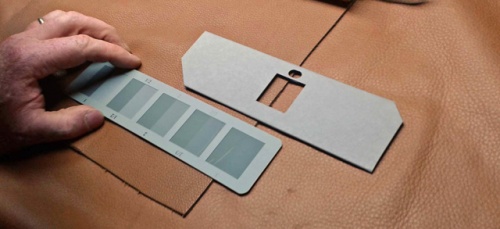
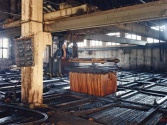
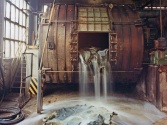
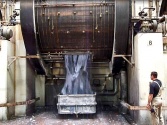



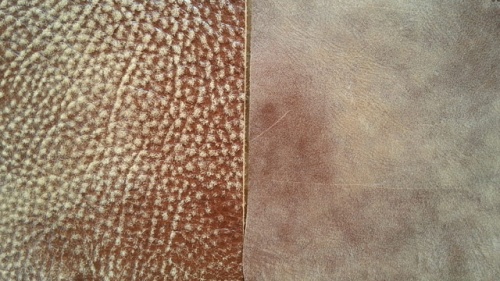
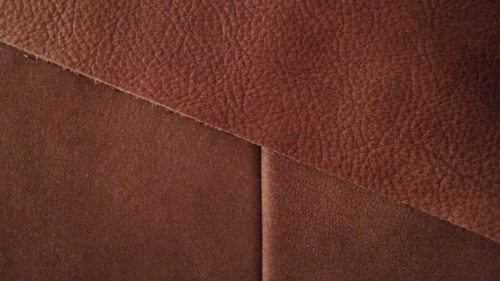
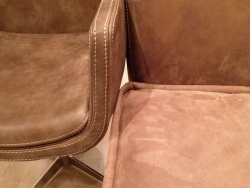
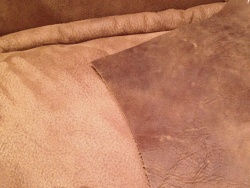

 a kotori web solution
a kotori web solution